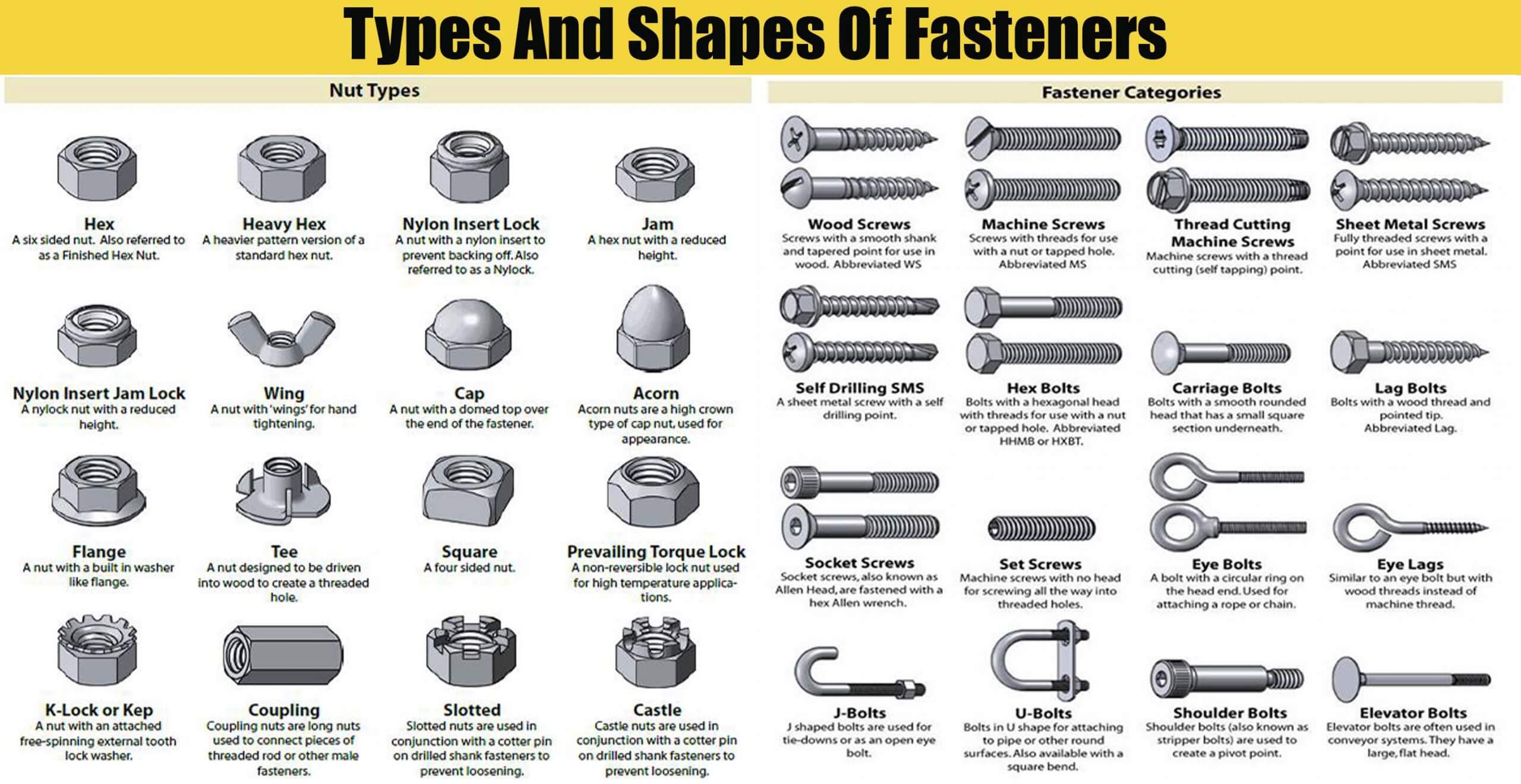Those Unsung Champions: Exploring the Realm of Fasteners and Bolts
In the world of fabrication, vehicle fixes, and various DIY projects, fasteners and bolts play an crucial role, yet they often go unrecognized. Such simple fasteners are the invisible heroes that hold together the very frameworks and objects we rely on every day. Without them, our furniture would fall apart, our vehicles would break down, and our houses would lack the security we often take for granted. Understanding the different kinds of nuts and bolts, their specific uses, and how to select the suitable fastener for your project is essential for anyone who seeks to construct or fix.
This comprehensive guide is designed to explore the broad world of nuts and bolts, from the basics to the nuanced distinctions. We will examine in detail the various types of fasteners that exist, including common and unique options, their specific applications, and the materials used to make them. Whether you are a seasoned expert or a casual DIY enthusiast, this guide will help you make informed choices, guaranteeing your projects are built to last. By the end, you will not only appreciate the significance of these small yet powerful components but also feel sure in selecting the right fastener for your needs.
Types of Fasteners and Bolts
Nuts and bolts are basic components widely used across various fields, each serving specific purposes tailored to particular applications. The most common types of bolts include hex-head bolts, carriage bolts, and wood screws. Hexagon bolts have a polygonal head and are typically used in mechanical constructions due to their high strength and versatility. Carriage bolts, characterized by their smooth domes and flat sides, are perfect for fastening lumber, providing a clean edge on one side while ensuring a secure grip on the other. Lag screws, on the other hand, are sturdy fasteners designed for similar materials, making them essential for structural and framing tasks.
In addition to fasteners, nuts play a critical role in ensuring the strength of assemblies. Typical nuts, lock nuts, and flanged nuts are frequently used in different scenarios. Standard nuts fit onto bolts to fasten them in position, while locking nuts incorporate features that prevent loosening due to movement. Flange nuts include a built-in washer that spreads load and enhances grip, making them suitable for applications where a secure fit is necessary. Knowing these various types of fasteners and their functions is critical for selecting the appropriate fasteners for any project.

In conclusion, the choice of nuts and bolts depends on factors such as the substances being fastened, the required strength of the bond, and the factors they will encounter. Whether for major building projects or lighter automotive repairs, the correct selection of nuts and bolts can greatly impact the effectiveness and longevity of a project. Getting to know oneself with the various types of nuts and bolts available, along with their specific attributes, empowers do-it-yourselfers and experts alike to make informed decisions in their joining tasks.
Components and Finishes
When it comes to nuts and hardware, the material used plays a vital role in determining their strength, longevity, and suitability for specific applications. Iron is the most prevalent substance due to its high tensile stability and affordability. Alternatives like stainless steel offer added corrosion resistance, making them suitable for external and aquatic environments. Moreover, other substances such as brass and titanium are often chosen for their unique properties, including lightweight choices and resistance to specific chemicals.
Coatings on fasteners and bolts are equally important when it comes to performance and longevity. Galvanization is widely used to provide a level of corrosion resistance, but this technique isn't as robust as double-dipping, which involves a enhanced layer of zinc to better resist harsh environments. Other finishes, like epoxy or polymeric finish, can offer additional protection and aesthetic appeal, with options tailored for specific circumstances or aesthetic requirements.
Understanding the appropriate substances and finishes for your hardware is essential for ensuring endurance and reliability in your projects. When selecting fasteners and bolts, think about not just their strength and weight-bearing abilities but also the surroundings in which they will be used. This understanding will help you choose the optimal options to suit your needs and enhance the overall performance of your construction.
Specialty Fasteners
When addressing distinct projects, specialty fasteners often are crucial tools in ensuring durability and functionality. From anti-theft fasteners to anchor bolts, these specialized components cater to particular demands that standard nuts and bolts may not meet. For example, tamper-proof nuts and bolts are designed for applications where theft or unauthorized removal could pose a danger, making them ideal for community installations and devices that must stay secure.
Another important category comprises polymer lock nuts, which contain a nylon insert that provides resistance against the bolt threads to avoid unscrewing. These fasteners are particularly helpful in settings subjected to vibrations, such as automotive applications or machinery installations, where maintaining tight connections is vital. Their distinct design helps prolong the durability of assemblies by reducing the chance of fastener failure due to vibration-induced loosening.
Finally, anchor bolts serve a key role in construction and foundation work. These fasteners fasten structures to concrete, providing stability and strength in various applications, from buildings to bridges. Comprehending when to use expansion bolts versus other types of anchors can significantly boost construction outcomes, ensuring that projects are both sound and compliant with building codes. Looking into these specialty fasteners equips DIY enthusiasts and professionals alike with the insight necessary for effective and reliable applications.